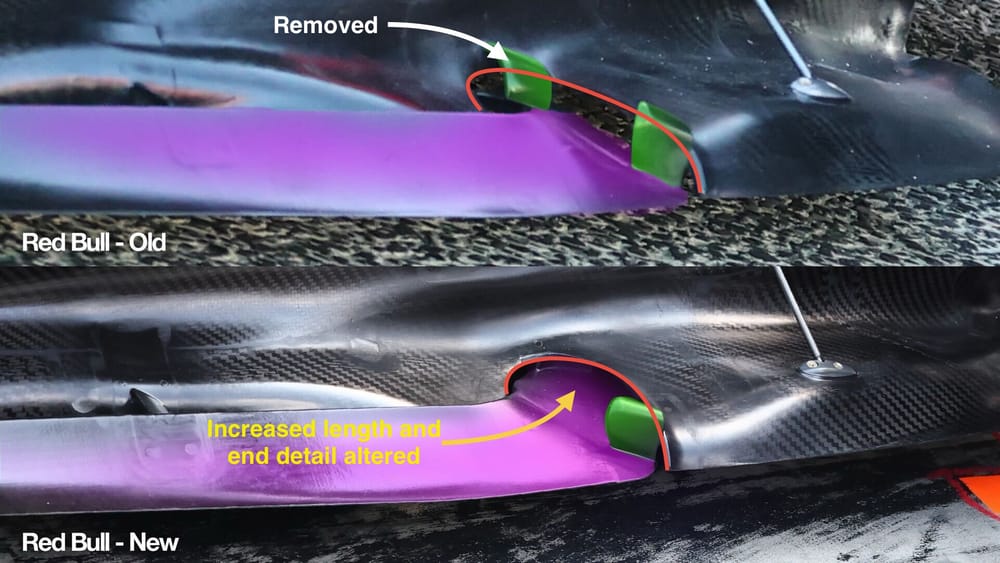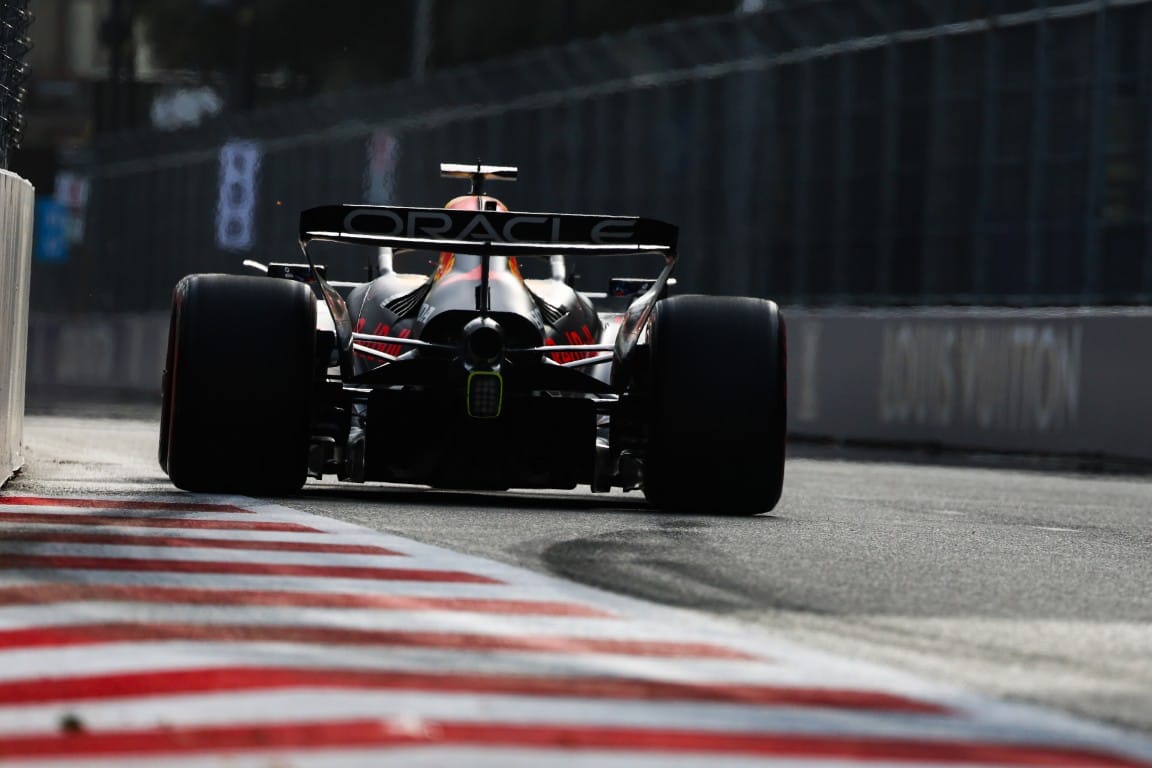Back-to-back Formula 1 wins for Red Bull and Max Verstappen have fired a warning shot across McLaren's bows.
The drivers' championship is a stretch, but all the while it's still mathematically possible we know Verstappen won't give up without a fight - and McLaren team principal Andrea Stella knows that after a disastrous weekend in Baku his team, including his drivers, must sharpen up its act before it haemorrhages too many points.
But can we conclude that Red Bull really is now capable of winning everywhere?
What Verstappen needs
The corner was turned with the Red Bull RB21 at Zandvoort after the August break. Ahead of Baku, I took an in-depth look at that change. The low-downforce nature of Monza allowed Red Bull to run what looked visually to be more front wing than usual and still achieve a good balance with a very low-downforce, and hence low-drag, rear wing.
Verstappen can't live with turn-in understeer. That doesn't mean he can live with too much oversteer as even he has a limit, but he needs that front-end bite to get the initial rotation. If he gets that, it allows the rear tyre to build up the required slip angle, maximising its grip very quickly.
To get the maximum grip from any tyre, it must generate a certain percentage of slip. In other words, the tyre is sliding across the track surface. As you apply the steering lock, the front slip angle is generated more or less immediately. The driver is then waiting for the rear to slip and while they are waiting they are hoping that it stops and doesn't break into a wild slide.
While we are on this subject, the actual slip angle for different tyre manufacturers can be quite different. The higher the slip angle available from a tyre, the more docile the car is, meaning it can slide more. The lower the slip angle, the more knife-edge the car will be to drive.
Looking at the last few tyre suppliers involved in F1, Bridgestone had a reasonably high slip angle, while Michelin and Pirelli were much more critical. Red slip angle can mean higher grip levels, but it also means the car needs to be driven more on rails and is far less forgiving. Anyway, back to what this column is about...
From there on, through the corner, it's down to the driver. Verstappen now has a car that gives him the turn in required and he can do the rest.
What Red Bull's changed
In Azerbaijan, Red Bull ran a rear wing from the same family just with no trimming on the trailing edge. The green highlight line shows the Baku trailing edge. That specification was run by Verstappen until the latter part of FP3 at Monza, with Yuki Tsunoda continuing to use it, but Verstappen forced the team to run with the rear wing on his car trimmed to the red line.
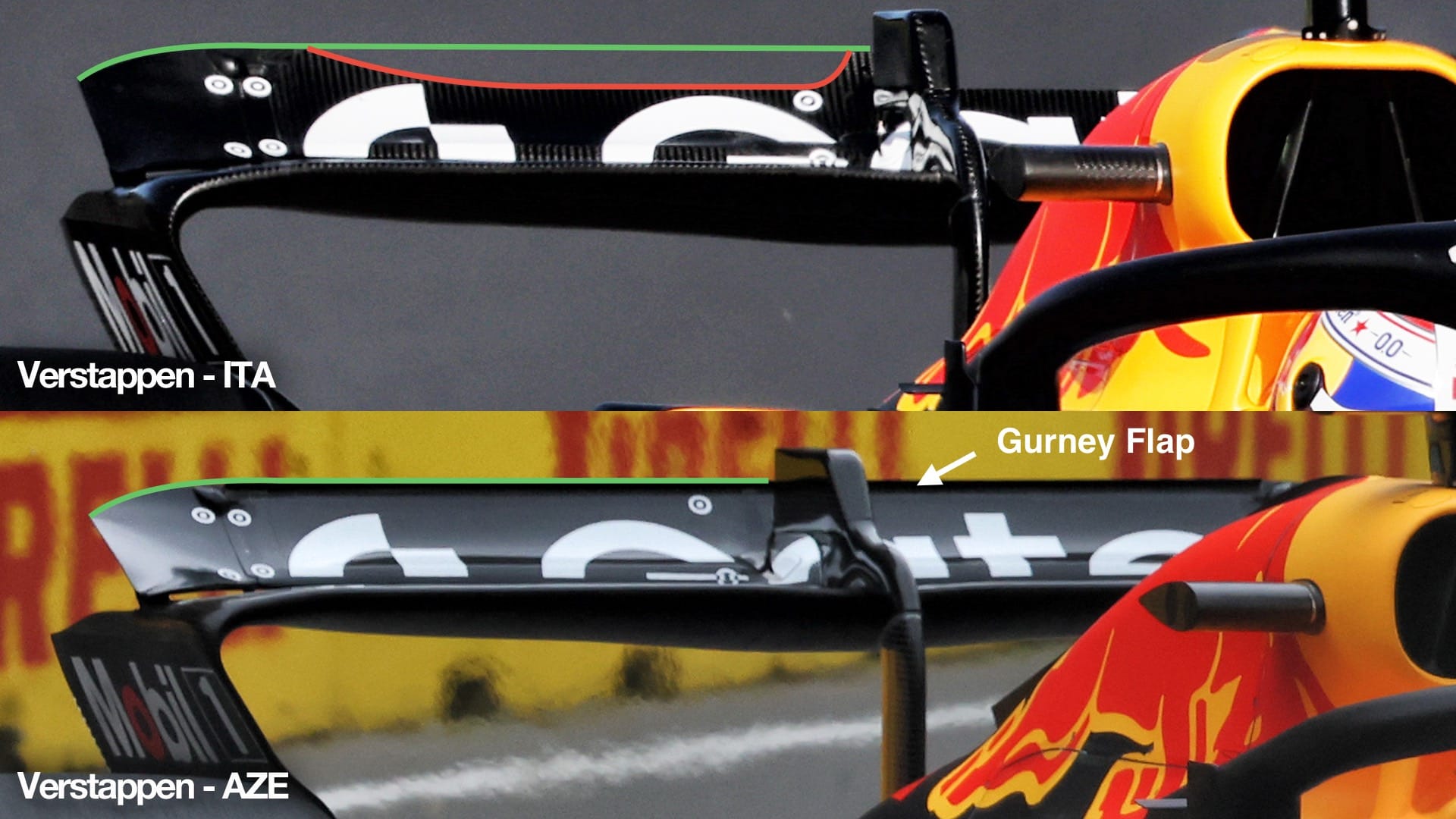
Red Bull also ran a Gurney flap on the trailing edge in Baku. I have highlighted this with the white arrow. Red Bull probably had this rear wing assembly at its maximum setting and this Gurney flap will increase rear downforce slightly from the overall wing assembly. That Gurney flap will also mean that the centre of pressure of the rear wing assembly will actually be further rearward than from an increased wing angle. More importantly, the fact the centre of pressure on the wing itself will be further rearward will help improve the rear stability in the braking areas.
The front and rear wing relationship is not the only change. Red Bull also had a floor update for Monza, which was again run in Baku.
This increased opening, which is highlighted with the red line on the image below, allows the airflow that is coming across the upper surface of the floor to connect up to what is called the 'tyre squirt'. This is the flow displaced by the tyre as it rotates onto the track surface.
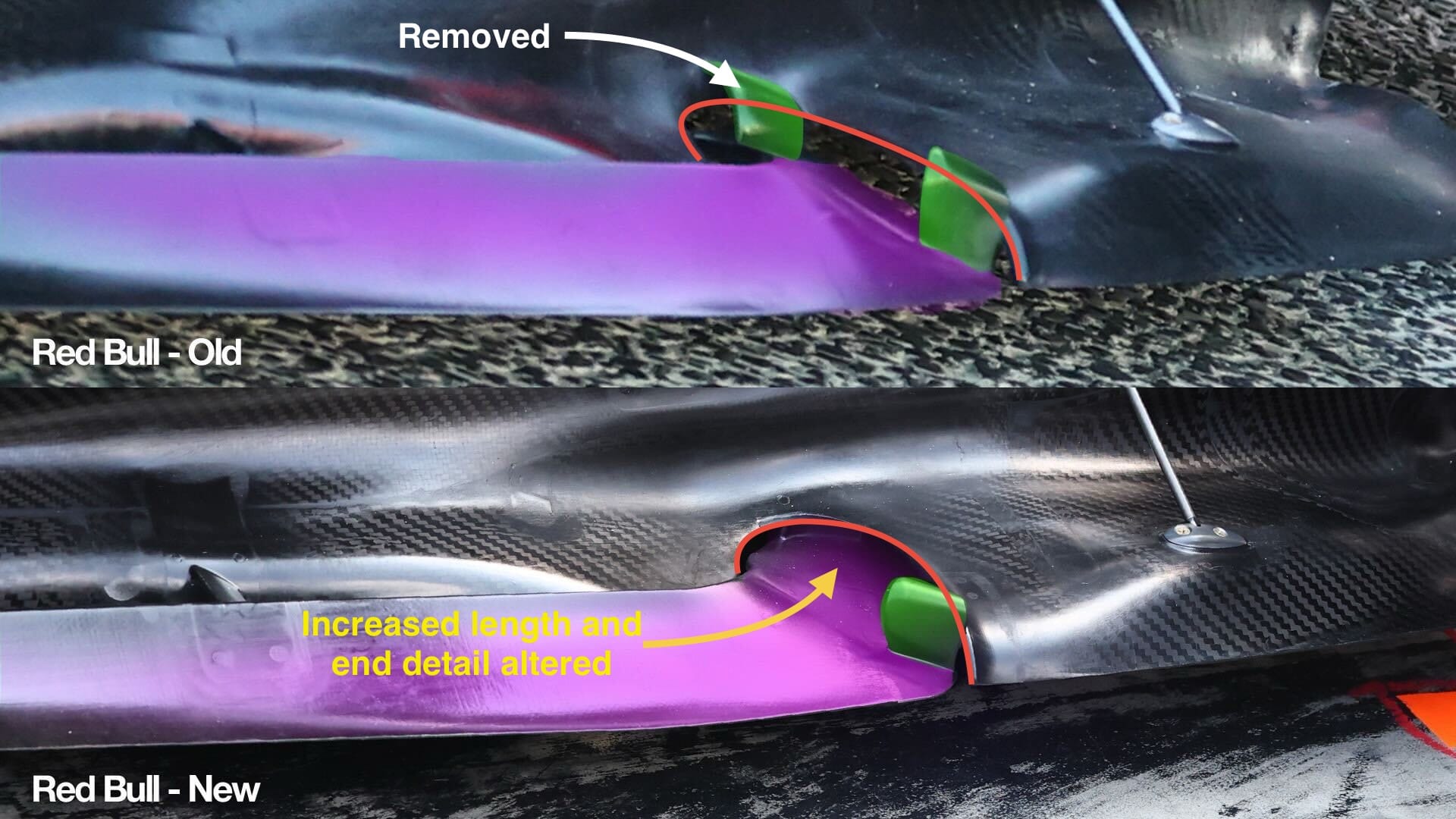
The tyre squirt either goes outwards or inwards. Inwards can interfere with the performance of the diffuser, but having the airflow that is going through this opening connect up to the tyre squirt improves the flow direction and allows it to go around the inner wall of the tyre into the low pressure area where the tyre is coming away from the track surface. This both improves diffuser performance and reduces drag.
You can see Red Bull has also removed one of the mountings - slot gap separators - which I have highlighted with the white arrow. These mountings are all well and good, but if they don't match the flow direction they will increase the airflow blockage. If you don't need them to support the horizontal wing section, they are better off gone.
Returning to what I discussed in my post-Monza front wing column, and having had a little more time to think about the positives this might bring, it wouldn't surprise me if it was driven by the potential for change of front wing downforce relative to steering lock.
If we look at the front wing rear element trim line (green highlight) from May 2025, at Imola, we can see that for this high downforce level the longest chord length (white line) is more or less in the middle of the gap between the inner face of the front tyre and the chassis side.

With this central chord length, the wing will be generating transverse flow. The yellow arrows are to represent the airflow on the undersurface of the wing, which will be pulled towards that longer chord section to help keep the airflow attached in this area. The opposite is true of the airflow on the upper surface. It will be forced away from that longer chord section.
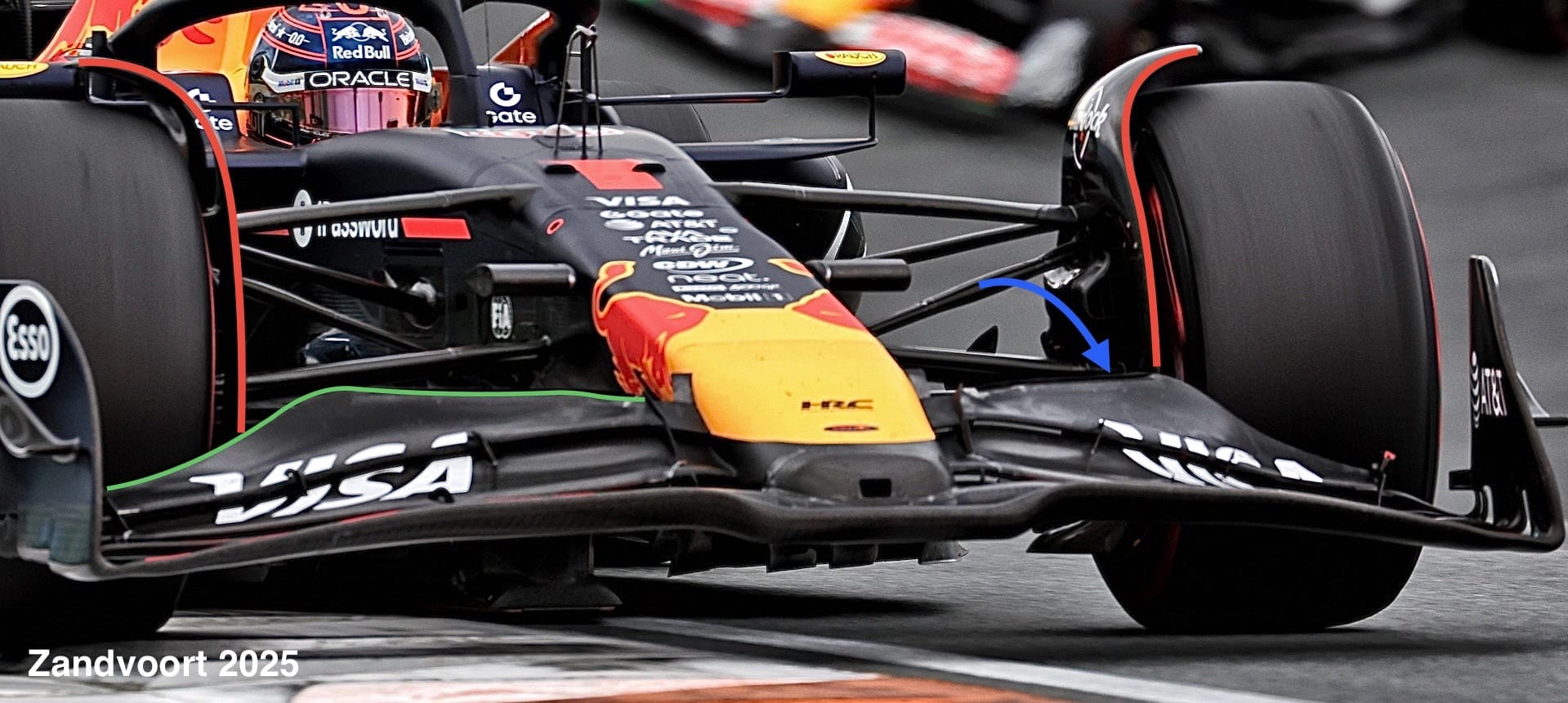
If we then look at the Zandvoort wing, we can see that the longest chord section is now further outboard. It is nearer to the inner wheel and tyre fairing, which is highlighted with the red line on the leading edge. This can now be used to manage that airflow coming off the trailing edge of the longest chord section of the front wing.
By managing this airflow with this inner wheel and tyre fairing, the flow will be much more consistent with varying degrees of steering lock - overall a more stable centre of pressure location, which is where the balance of the car is generated from.
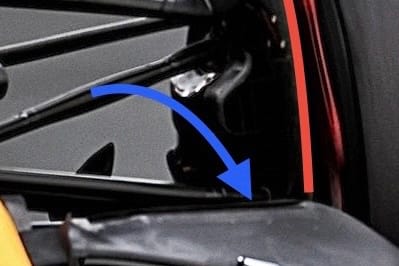
It also looks like there is a small reverse curvature on the rear flap trailing edge, which is highlighted by the blue arrow. It seems to disappear just before the flap trim drops away in front of the front tyre. I'm not 100% sure about this, but if it is really there it would improve the reattachment of the airflow along that trailing edge between the lower and upper wing surfaces, helping maintain the energy in the airflow to the rest of the car.
Will he keep winning?
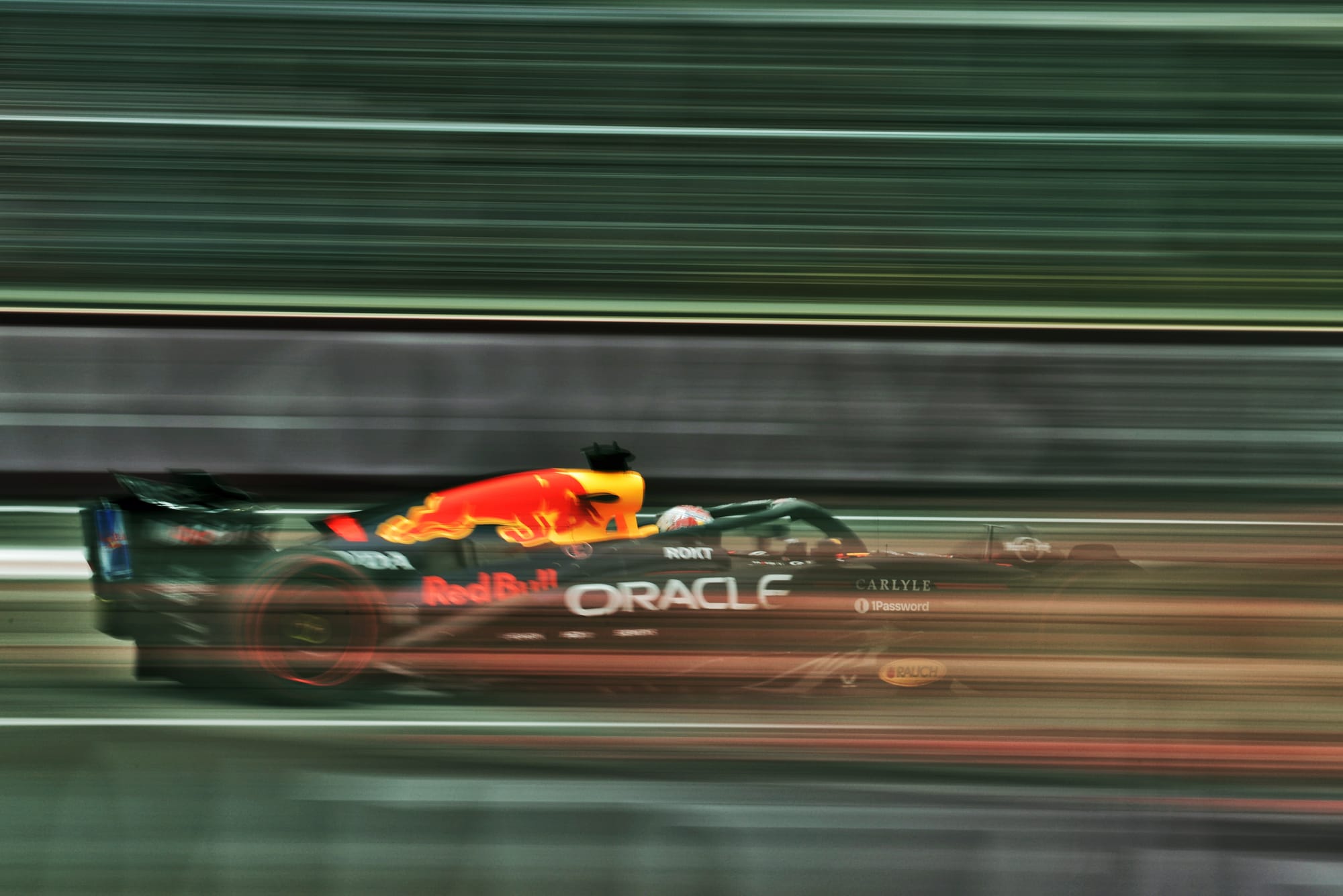
The last thing any driver wants, especially Verstappen, is a car that increases understeer with steering lock. If anything, you want the opposite: just a touch of understeer to give them the feeling of what the car is going to do that then reduces with lock. If you can achieve this, the driver has another trick in their toolbox.
Red Bull has definitely improved, but does that mean it will dominate the rest of the season even on very different tracks to Monza and Baku? I doubt it. However, Verstappen having a car that really plays to his driving style again definitely gives him more chance to spoil the McLaren party on more than one occasion.


